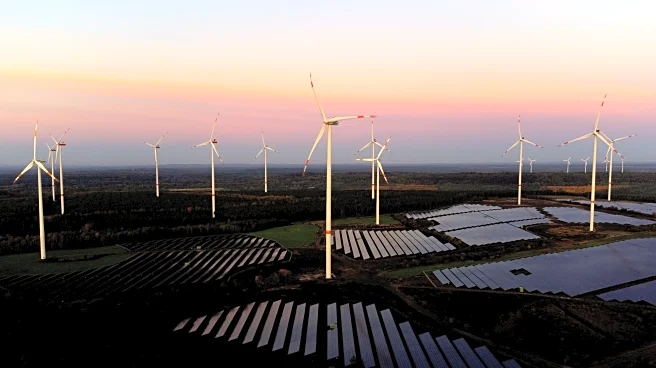What's Happening?
Global electricity demand increased by 369 terawatt-hours (TWh) in the first half of 2025, driven primarily by China, the U.S., India, and the EU. China accounted for 54% of the demand rise, while the U.S. contributed 21%. The increase is lower than the previous year's 731 TWh, attributed to a more measured pace of industrial growth and fewer heatwaves. Solar and wind generation outpaced the growth in demand, with solar alone meeting 83% of the increase. Despite the rise, fossil fuel generation declined, indicating a shift towards renewable energy sources.
Why It's Important?
The rise in global electricity demand underscores the growing energy needs of major economies, particularly China and the U.S. The shift towards renewable energy sources like solar and wind highlights efforts to reduce reliance on fossil fuels and address climate change. This trend could influence global energy policies and investments, as countries seek sustainable solutions to meet increasing demand. The decline in fossil fuel generation reflects a potential long-term shift in energy production, impacting industries and environmental strategies worldwide.
Beyond the Headlines
The emphasis on renewable energy sources in meeting electricity demand suggests a broader transition towards sustainable energy practices. This shift could lead to technological advancements and increased investments in renewable infrastructure. The decline in fossil fuel generation may also prompt discussions on energy security and the economic implications of transitioning away from traditional energy sources. As countries navigate these changes, the global energy landscape could experience significant transformations, affecting economic and environmental policies.












